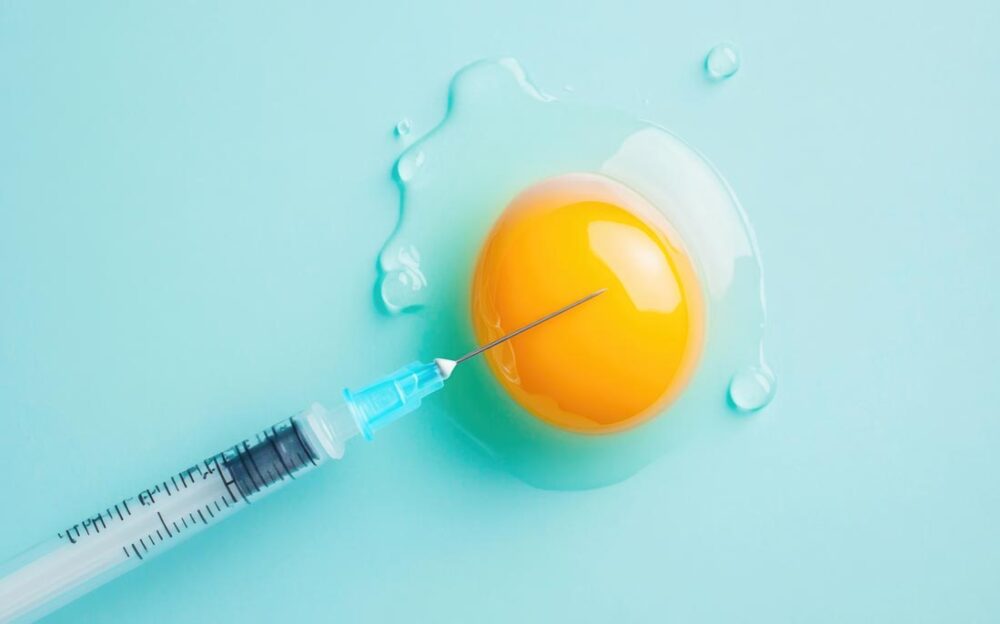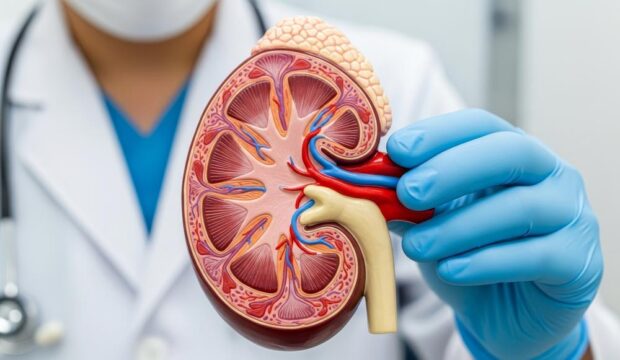Advertisment
AI could improve the success of IVF treatment

During IVF treatment, doctors use ultrasound scans to monitor the size of follicles – small sacs in the ovaries containing eggs – to decide when to give a hormone injection known as the ‘trigger’ to prepare the eggs for collection and ensure that they are ready to be fertilised with sperm to create embryos. The timing of the trigger is a key decision, as it works less effectively if the follicles are too small or too large at the time of administration. After the eggs are collected and fertilised by sperm, an embryo is then selected and implanted into the womb to hopefully lead to pregnancy.
Researchers used ‘Explainable AI’ techniques – a type of AI that allows humans to understand how it works – to analyse retrospective data on more than 19,000 patients who had completed IVF treatment. They explored which follicle sizes were associated with improved rates of retrieving mature eggs to result in babies being born.
They found that delivering the hormone injection when a greater proportion of follicles were sized between 13-18mm was linked to higher rates of mature eggs being retrieved and improved rates of babies being born.
Currently, clinicians use ultrasound scans to measure the size of the lead (largest) follicles and generally give the trigger injection when a threshold of either two or three lead follicles greater than 17 or 18mm has been reached.
Their findings suggest that maximising the proportion of intermediately sized follicles could optimise the number of mature eggs retrieved and improve the rates of babies being born.
The team believe that the findings from the study highlight the potential of AI to aid in the personalisation of IVF treatment to improve clinical outcomes for patients and maximise their chance of taking home a baby. The team plan to create an AI tool that will utilise findings from their research to personalise IVF treatment and support clinicians’ decision making at each step of the IVF process. They will apply for funding to take this tool into clinical trials.
The research, published in Nature Communications, is led by researchers at Imperial College London, University of Glasgow, University of St Andrews, and clinicians at Imperial College Healthcare NHS Trust. It is funded by UK Research and Innovation and the National Institute for Health and Care Research (NIHR) Imperial Biomedical Research Centre (BRC).
Dr Ali Abbara, NIHR Clinician Scientist at Imperial College London and Consultant in Reproductive Endocrinology at Imperial College Healthcare NHS Trust, and co-senior author of the study said:
“IVF provides help and hope for many patients who are unable to conceive but it’s an invasive, expensive, and time-consuming treatment. It can be heartbreaking when it fails, so it’s important to ensure that this treatment is as effective as possible.
“AI can offer a new paradigm in how we deliver IVF treatment and could lead to better outcomes for patients.
“IVF produces so much rich data that it can be challenging for doctors to fully make use of all of it when making treatment decisions for their patients. Our study has shown that AI methods are well suited to analysing complex IVF data. In future, AI could be used to provide accurate recommendations to improve decision-making and aid in personalisation of treatment, so that we can give each couple the very best possible chance of having a baby.”
Professor Waljit Dhillo, an NIHR Senior Investigator from the Department of Metabolism, Digestion and Reproduction at Imperial College London, Consultant Endocrinologist at Imperial College Healthcare NHS Trust and co-senior author of the study, added:
“Our findings could pave the way for a new approach to maximise the success of IVF treatment, leading to more pregnancies and births.
“Our study is the first to analyse a large dataset to show that AI can identify the specific follicle sizes that are most likely to yield mature eggs more precisely than current methods.
“This is an exciting development as the findings suggest that we can use information from a much wider set of follicle sizes to decide when to give patients trigger shots rather than just the size of only the largest follicles – which is what is used in current clinical practice.”
Dr Thomas Heinis, co-senior author from the Department of Computing at Imperial College London, added:
“Explainable AI can be a valuable resource in healthcare. Where the stakes are so high for making the best possible decision, this technique can support doctors’ decision making and lead to better outcomes for patients. Importantly, we expect computing power to improve exponentially in the near future, enabling us to make decisions using precise data in a way that hasn’t been possible previously.”
One in six couples experience infertility and IVF has emerged as a valuable intervention to help patients conceive.
Trigger injection
A key decision in IVF treatment is when to use the ‘trigger’ shot of hormones, such as human chorionic gonadotropin (hCG), to mature eggs for collection. The timing of the trigger shot impacts on the number of mature eggs retrieved and the success of treatment.
Clinicians use ultrasound scans to measure the size of the lead (largest) follicles. They will generally give the trigger shot when a threshold of either two or three lead follicles greater than 17 or 18mm in diameter has been reached. However, this method lacks precision and does not take into consideration the sizes of each individual follicle and their likelihood of each follicle yielding a mature egg.
Follicle sizes
In the retrospective study, the team used AI techniques on data from 19,082 patients aged between 18-49 years of age who had treatment in one of 11 clinics across the UK- including IVF clinics at Imperial College Healthcare NHS Trust – and two in Poland between 2005-2023. They examined individual follicle sizes on the days prior to and on the day of trigger administration.
The researchers found that intermediately sized follicles of 13-18mm were associated with more mature eggs subsequently being retrieved. The data suggested that having a greater number of follicles within this range on the day of trigger was associated with better clinical outcomes.
They also found that stimulating the ovaries for too long, such that there was a greater number of larger follicles (more than 18mm) on the day of trigger administration, could lead to a premature elevation of the hormone progesterone. This can have a negative impact on IVF outcomes by affecting the proper development of the endometrium – the tissue that line the uterus and is important for an embryo implanting to result in pregnancy. This reduces the chances of an embryo implanting and subsequently leading to a live birth. These AI derived insights can help the team develop evidence-based IVF protocols guided by data that should improve the efficiency of treatment.
To download the paper:
https://imperialcollegelondon.box.com/s/h46qql6b5flvnlpfpybgnvyfux6i2pns





